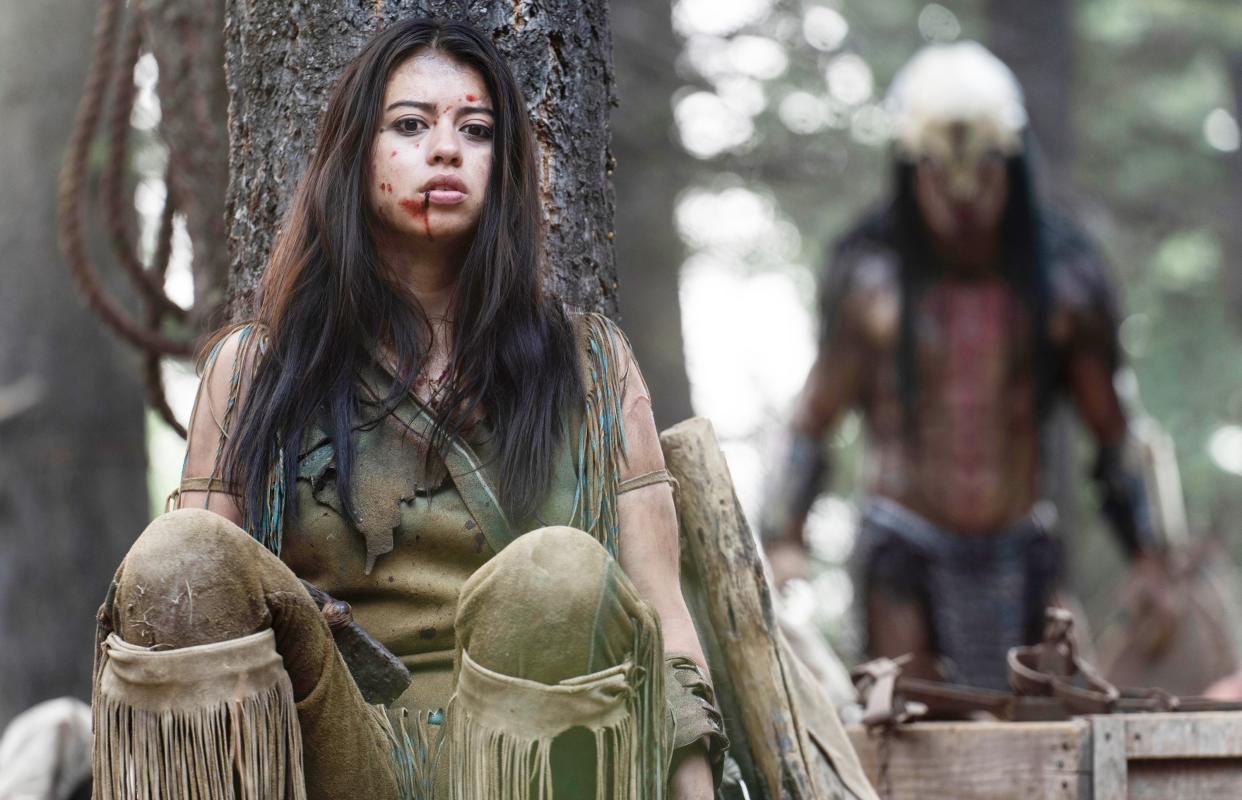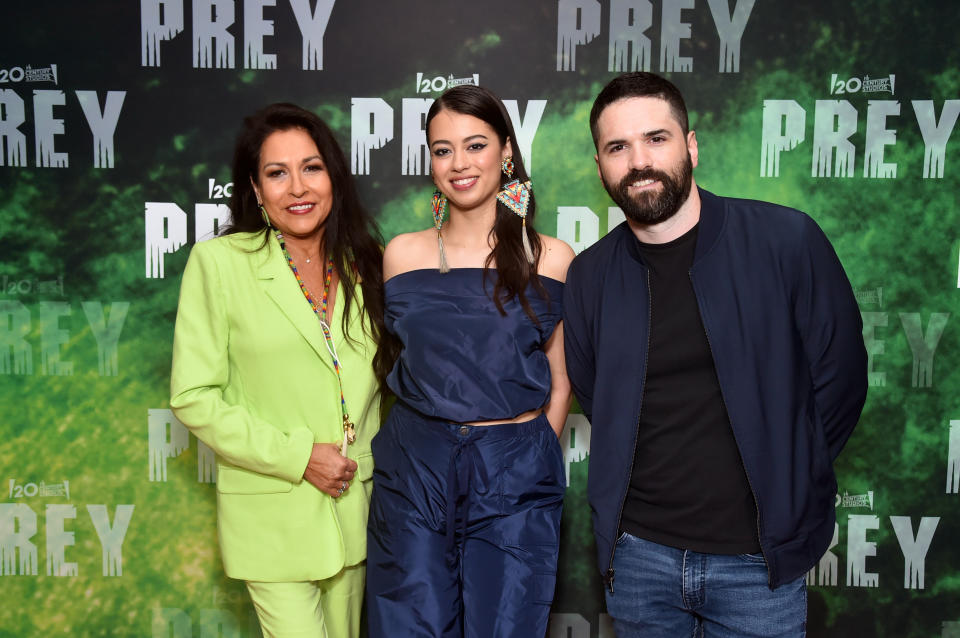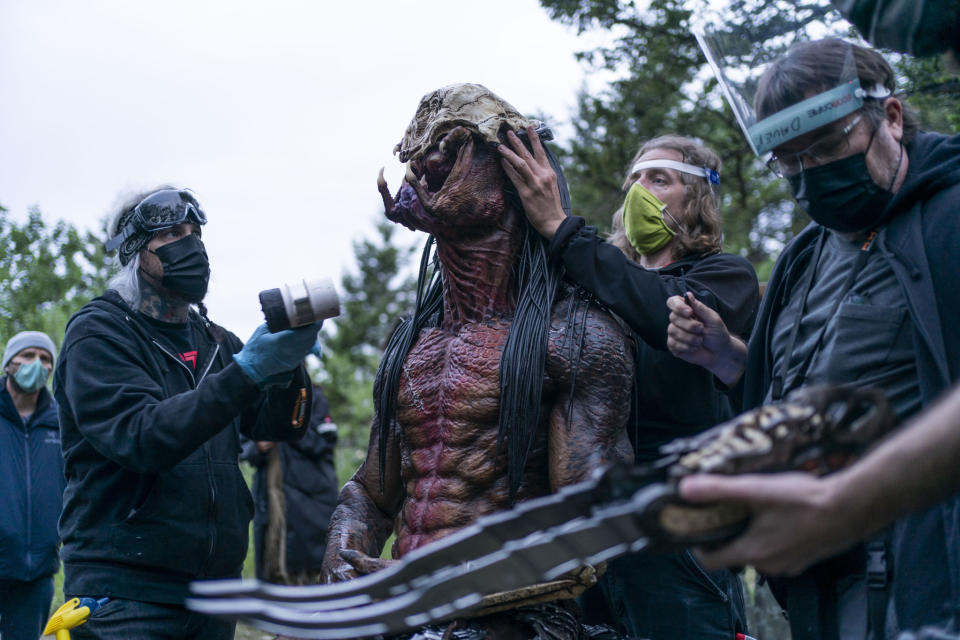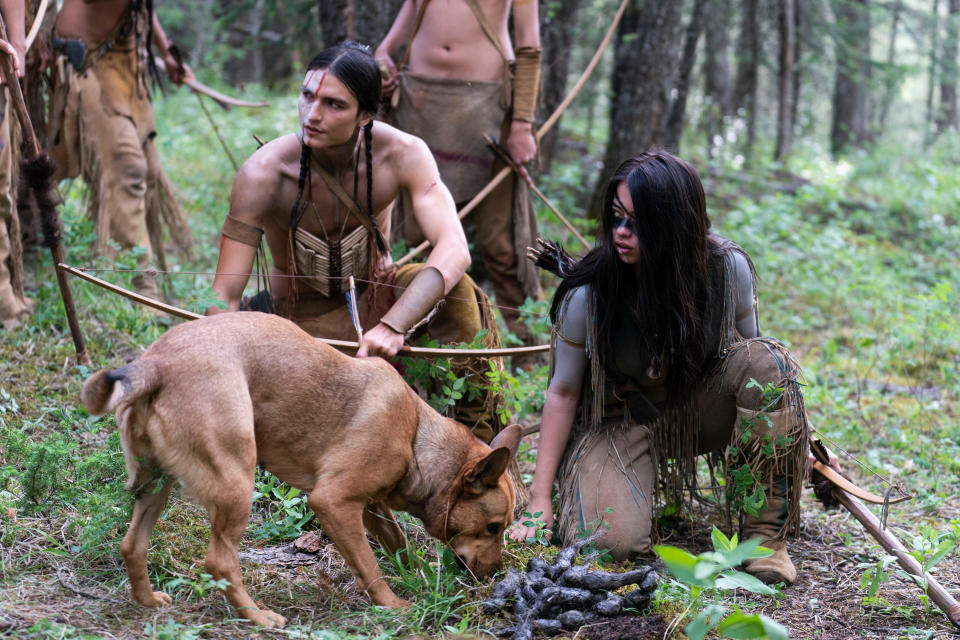There Was No ‘Prey’ Without the Predator, Says Director Dan Trachtenberg

- Oops!Something went wrong.Please try again later.
- Oops!Something went wrong.Please try again later.
Welcome to It’s a Hit! In this series, IndieWire speaks to creators and showrunners behind a few of our favorite television programs about the moment they realized their show was breaking big.
All it took was an email to get 20th Century Studios interested in greenlighting Dan Trachtenberg’s “Prey,” the film that (per Hulu) became the streamer’s biggest premiere ever and is currently nominated for six Emmys, including Outstanding Television Movie.
More from IndieWire
'Telemarketers' Review: The Safdies-Produced HBO Documentary Is a Rowdy, Eye-Opening Exposé
Rob Lowe Says Leaving 'Unhealthy' Situation on 'The West Wing' Was 'The Best Thing I Ever Did'
“I was thinking a lot about a few things at once,” Trachtenberg said to IndieWire over Zoom, as he prepared to give a step-by-step breakdown of how the “Prey” pitch came together. “On the one hand, I was thinking about period and sci-fi — wanting to make a movie that combined those two ingredients that we don’t often see combined — and survival stories, and making a movie that could primarily be told through action with little to no dialogue.”
Wanting the film to be an experience that’s equal parts visceral and emotional, his next thought was, “Maybe if we took the engine of a sports movie, of an underdog story, and fused that with a survival tale and a thriller, then we could really be about something more thematically oriented and exciting,” said Trachtenberg. The idea to center the story around a Comanche tribe came from him pondering, “Who [is] a protagonist that we never get to see on screen, so the underdog experience is one outside the movie and inside the movie,” he said. “Native Americans, and Comanche in particular, have so often been relegated to playing the sidekick or the villain — never the hero.”
With the genre, the setting, and the protagonist figured out, all that was left was the conflict. Enter: the Predator. “It’s looking for the alpha, and here’s a person trying to prove themselves as the alpha,” said Trachtenberg of the film, about a young woman named Naru (Amber Midthunder), living in the Great Plains in 1719, who fights off one of the first of the infamous aliens to land on Earth.
Though Fox, who owned the rights to the Predator franchise, was instantly won over, this all happened shortly before the studio’s merger with Disney went into effect. “We were in a filing cabinet for a couple years, and then when it came back, it was brought up that maybe Hulu would be the place for it,” said Trachtenberg. “Whether that was in addition to theatricality or not was uncertain.”

Ultimately, the fact that “Prey” was destined for a streaming premiere did not factor into how the “10 Cloverfield Lane” filmmaker planned to direct his sophomore effort. “Whether it’s labeled a TV movie or not, any filmmaker can always receive that argument from someone, [that] people are just gonna watch this on their phones,” said Trachtenberg. “So it doesn’t really help to think that someone might be looking at it on a smaller format.” If anything, he welcomed the challenge of keeping a viewer on the hook, even during the film’s stretches of silence.
“Everything we do craft-wise is to keep people on the edge of their seat in a genre like this — keep you interested and engaged so even long languid moments can’t be boring,” said the director. He compares it to “Office Space,” a legendary home video hit that does a good job of portraying boredom but is never boring. “It’s trying to say cinematographically, sonically, the office is a boring place where we all get restless. But it’s not actually boring for the audience. I think about that in all the different genre moments,” Trachtenberg said. “A whole crew of people put in a lot of time and sweat into making something that felt risky at every moment.”
Part of that risk, of course, was making his entry into the four decades-old film franchise something that felt both fresh and familiar. “It has to be a great movie, even if there was no IP attachment to it. It’s a great movie that hasn’t been made yet and is necessary and essential,” said the filmmaker. “And then the IP stuff that we’re going to do should be awesome, regardless of all the other things. Both things have to be equally worthy and awesome.”
Though there was a moment amid the Disney-Fox merger where Trachtenberg’s team asked if the film could be done elsewhere, with a new original creature, the director pushed back. “When you have to make a brand new creature, you’re competing against all the iconic things. There’s something lovely about Predator where it’s like, ‘Oh, cool, that’s been sorted. I know what it does, it looks awesome. We all love the design of it. It’s got a specific rule set and tool set and all those things.’”

Referencing “Prey” specifically, he said, “The thing that makes this awesome is what the Predator brings to it thematically. Not just ‘Look, how cool,’ and ‘We all love Predator,’ but literally what its mode is, what it suggests about our main character just by including it in the movie, with its own code and all that. It made the non-Predator aspects of our film even stronger, so it just felt like, ‘We gotta hold out. This should be a Predator movie. It just makes too much sense.’”
It should be noted as well that each Predator film has been helmed by a different director, so Trachtenberg did not face any sort of pushback in changing the design of the creature or the tools it uses. “There’s no George Lucas for the Predator franchise,” he said. “‘Predator,’ to its great effect, was very slim on lore. That was the whole point: that we barely knew much about this thing. So it’s a unique franchise in that way.” If there was a sort of culture bearer that made sure there was a throughline between “Prey” and the rest of the Predator films, it was StudioADI, the acclaimed character effects studio that had worked with the creature since 2004’s “Alien vs. Predator.”
Production obstacles included location scouting for summer during the snowy winter, having to train the dog that played Naru’s companion because they needed to cast a breed that was period-specific, the smell of bog the protagonist gets trapped in, the Predator suit catching on fire, and plenty more. “I’m not one who’s drawn to the outdoors and to hardship and all these things,” Trachtenberg said with a laugh. “I wanna make the movie, but I don’t wanna go through the process of making this movie. This is very hard.”
There was also the challenge of making sure the film was authentically Comanche. “We can’t just do it if it’s dramatically correct. We also have to think, ‘Is this culturally and historically correct?’ So that all took everyone’s extra efforts to get that stuff right.” And having filmed on the Stoney Nakoda reservation in Canada, everyone took part in a traditional pipe ceremony that was so effective in wishing the shoot well, the director is considering doing it for every project ahead. “[Of] all the problems I listed, weather was really not one. There was maybe one day where there was a storm coming, and we had to break down for a bit, but 95 percent of the movie was shot outside,” said Trachtenberg. “It really worked out in very specific ways. […] It’s just lovely to see [and] be fascinated by the differences, and feel the warm embrace of the things that are similar.”

Though he is hesitant to call it a necessary part of his process, the other common aspect of his films’ successes was having them roll out shrouded in secrecy. “I tend to lean into that, admittedly. At the same time, I don’t actually like it,” said Trachtenberg. “All I wanna do is talk effusively about the things I’m working on. I don’t like being mysterious.”
At the same time, just as he was able to conceive of “Prey” by keeping the audience in mind at each step, following “the great dramatic instincts of ‘Well, wouldn’t it be cool if we didn’t know this about this,'” and allowing these thrillers to slowly unfold for the viewers “is the same thing that’s happening inside of a movie, where you’re vetting the hierarchy of knowledge that’s unfolding, and you learn this about a character, then you learn this, then you learn this, and then you learn this about the plot — it all makes the movie more compelling.”
“Prey” is now streaming on Hulu.
Best of IndieWire
2023 Emmy Predictions: Outstanding Supporting Actor in a Drama Series
2023 Emmy Predictions: Outstanding Supporting Actress in a Drama Series
2023 Emmy Predictions: Outstanding Lead Actress in a Drama Series
Sign up for Indiewire's Newsletter. For the latest news, follow us on Facebook, Twitter, and Instagram.


